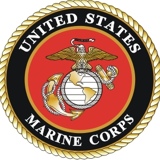Information
-
Audit Title
-
Squadron
-
Conducted on
-
Inspector
-
Location
-
Supervisor
-
Are electrical receptacles and cover plates free from dangerous cracks and secured in place? AFI 91-203 para. 8.2
-
Are receptacles located in damp or wet locations protected by GFCI breakers or receptacles? AFI 91-203 para. 8.2
-
Is the prohibition of multiple plug adapters enforced to prevent overloading electrical circuits? AFI 91-203 para. 8.2.1
-
Are cords that show signs of fraying, cracking, wearing or damage removed from service? AFI 91-203 para. 8.4.1.2
-
Are electrical extension cords used as outlined in the NEC and not used as a substitute for fixed wiring? AFI 91-203 para. 8.4.1.3
-
Are electrical extension cords routed through holes in ceilings, walls, floors, doorways, windows or similar openings? AFI 91-203 para. 8.4.1.4
-
Are circuit breakers and fuse boxes legibly marked to indicate their purpose? AFI 91-203 para. 8.5
-
Are circuit breakers, disconnect switches and fuses located so that they are not exposed to physical damage or in the vicinity of easily ignitable material? AFI 91-203 para. 8.5.2
-
Are electrical outlets, switches and junction boxes in good condition and free of defects? AFI 91-203 para. 8.6
-
Do workers remove jewelry, such as rings, earrings, bracelets and watches, and secure metal framed eyeglasses with a band or cord when they work on or near live electrical equipment? AFI 91-203 para. 8.8
-
Do workers ensure electrical circuits are de-energized, and locked out and tagged IAW Chapter 21, Hazardous Energy Control (Lockout and Tagout), prior to performing repairs on<br>energized electrical equipment? AFI 91-203 para. 8.9.1
-
Are only qualified operators who are designated in writing by the supervisor allowed to work on electrical installations and equipment? AFI 91-203 para. 8.9.2
-
Are electrical receptacles located within six (6) feet of any water source equipped with a GFCI? AFI 91-203 para. 8.9.9
-
Are machines safeguarded to protect workers during undervoltage situations in the event of a power interruption? AFI 91-203 para. 8.16
-
Are equipment interlocks working properly and not disconnected or bypassed by operators? AFI 91-203 para. 8.17.2
-
Is equipment de-energized where possible before personnel perform any maintenance actions? AFI 91-203 para. 8.18.1
-
Is a safety observer present when working on energized electrical circuits and equipment IAW AFI 32-1064 and UFC 3-560-01? AFI 91-203 para. 8.18.1
-
Are rubber insulating blankets or other suitable PPE and guards used when working adjacent to energized circuits? AFI 91-203 para. 8.18.2.1
-
Do personnel working on energized equipment over 50 volts wear long sleeved, ATPV rated clothing containing no synthetic fibers? AFI 91-203 para. 8.18.2.4
-
Do personnel who operate or service electrical switch-gear of voltage greater than 15 kV wear an appropriately ATPV-rated blast suit with hood and polycarbonate face shield? AFI 91-203 para. 8.18.2.5
-
When air-operated equipment, either pressure or vacuum, is used around energized parts, is the equipment nozzle made of non-conductive material and any pressurized air moisture free? AFI 91-203 para. 8.18.3.3
Signatures
-
Report Routing
-
Supervisor Signature:
-
Notification
-
Superintendent Signature:
-
Notification
-
Commander Signature:
-
Notification
-
Safety Office Signature:
-
Notification
-
Wing Commander Signature:
-
Notification












